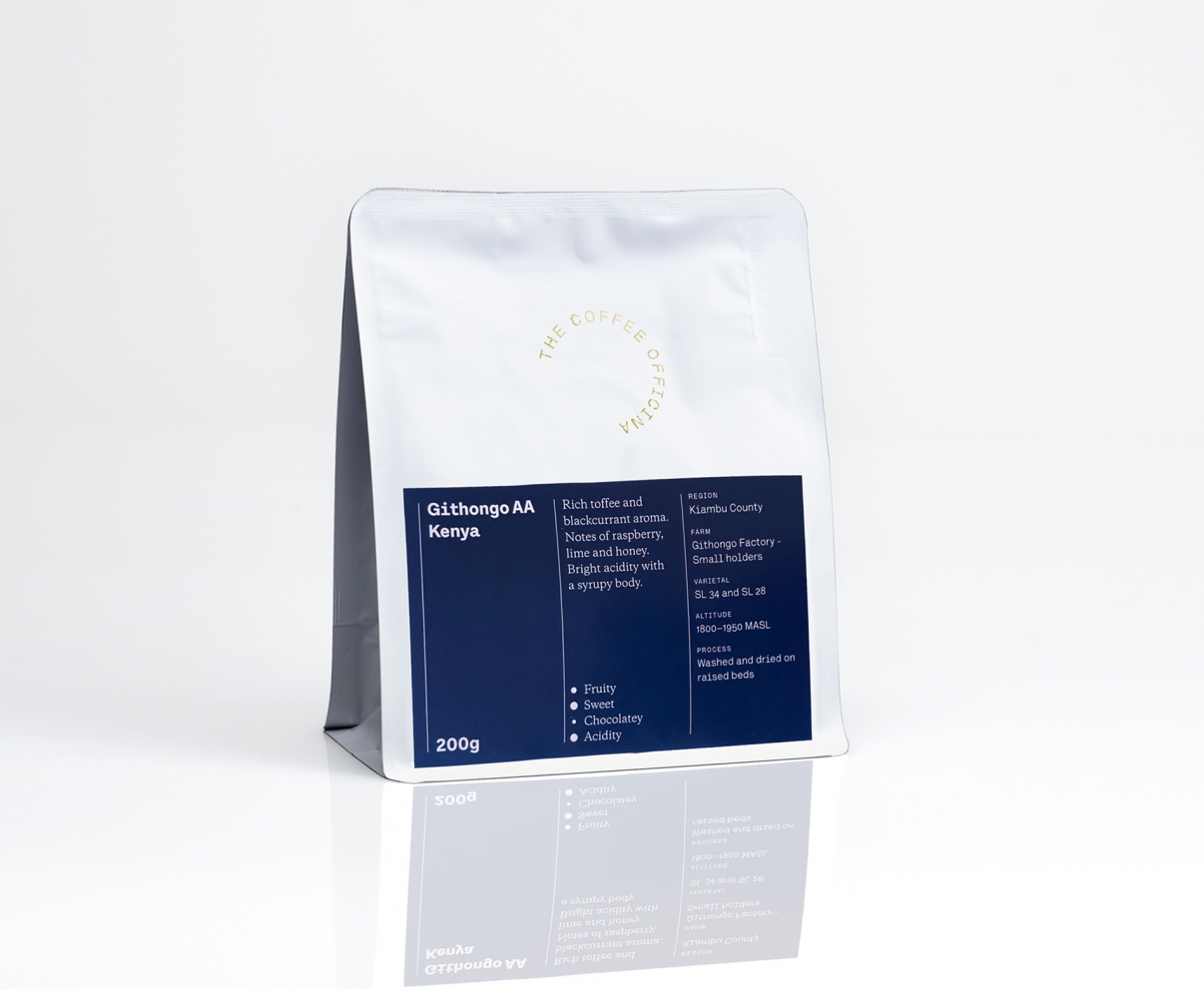The Githongo Factory is located in the Central highlands of Kenya bordering Nakuru and Kajiado in the West, Murang’a and Nyandarua to the North and Nairobi to the South. The name for Kiambu County originates from the Mbari ya Mbuu Kikuyu clan who once lived in the area.
Part of the Komothai Farmers Cooperative Society, the Githongo Factory produces roughly 470 MT of cherries each year, opening its doors in 1972. The coffee is grown throughout the region on healthy deep red volcanic soils high in nutrients and organic matter. This soil is ideal for coffee production and gives the trees the necessary resources to allocate energy to high-quality coffee production.
Harvest generally occurs amongst the cooperative members between October and December. In some cases, early crop can be harvested between April and July. The coffee trees are carefully monitored and picking ensues only when the cherry is at the ideal level of ripeness. Picking occurs in the morning and buckets of bright red coffee cherries are carried to the mill. As the sun traverses across the sky into the afternoon, the cherries are piled high as underripe cherries and foreign objects are removed from the gleaming pile.
The cherries are then poured into a hopper located just above the pulping station. From here, clean water from the River Athi is drawn upwards and directed into the hopper to cover the coffee cherries. This force pushes the cherries down a chute into the pulping house.
Here, the outer pulp is removed thanks to the work of two rotating abrasive slabs. The de-pulped coffee is then moved via the force of a water channel towards a fermentation tank. Along the way, floaters, or lower quality coffee beans, are removed to ensure only the highest quality continue along the process. The denser beans are funnelled through a hole where they land into a fermentation tank to rest for the evening.
The following morning, workers assess the feel of the sticky mucilage remaining on the coffee. If it has reached the ideal level, water is placed over the beans to give them a final wash. From here, sluice gates open to move the coffee into washing channels where the coffee slides down a gently sloping tiled channel. Wooden shunts used by workers are manually placed into the coffee to separate the denser beans from the lighter beans.
From here, the coffee is evenly dispersed onto raised tables, under careful surveillance. If it is too sunny, or rain is in the forecast, the parchment is carefully covered.
Moisture is regulated until the target of 10-12% is reached. The parchment is bagged up and transported to the dry mill.
After being hulled, the coffee rests and is soon filled into 60kg hermetically lined Jute export bags.
